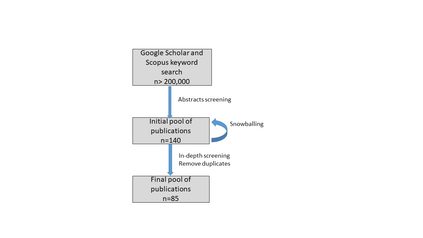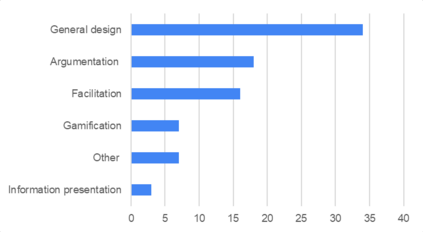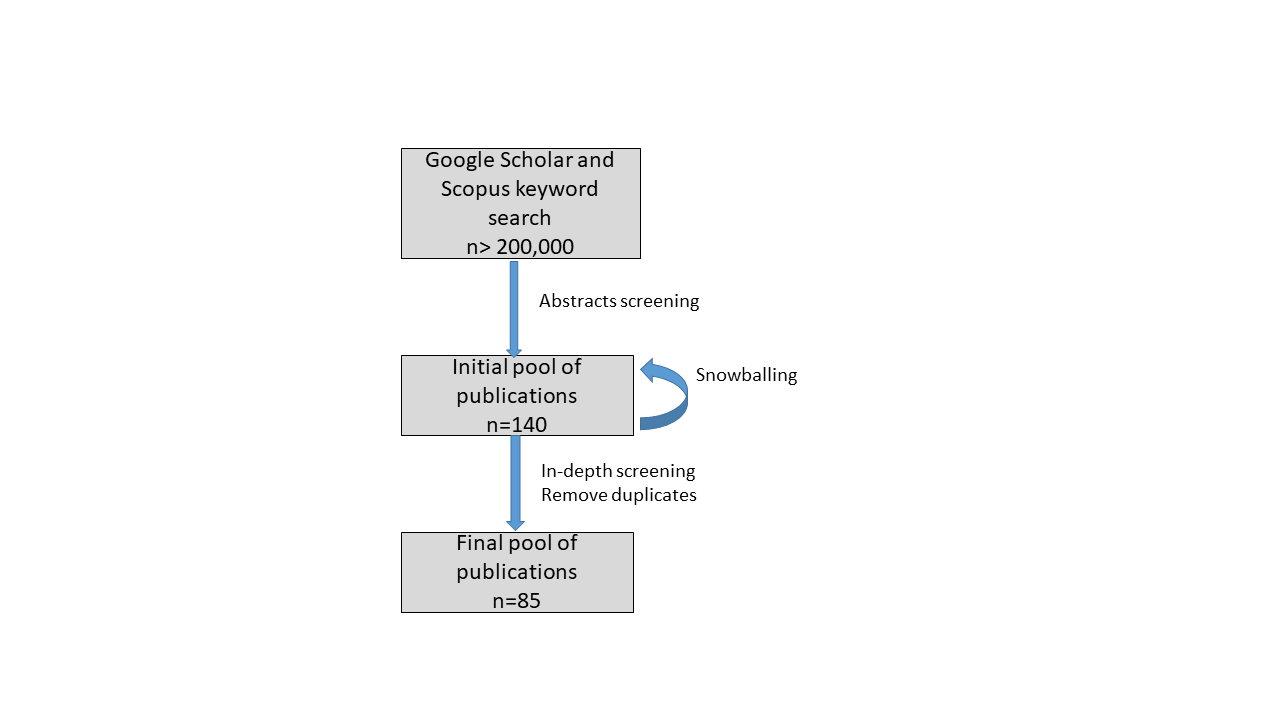Designers of online deliberative platforms aim to counter the degrading quality of online debates and eliminate online discrimination based on class, race or gender. Support technologies such as machine learning and natural language processing open avenues for widening the circle of people involved in deliberation, moving from small groups to "crowd" scale. Some design features of large-scale online discussion systems allow larger numbers of people to discuss shared problems, enhance critical thinking, and formulate solutions. However, scaling up deliberation is challenging. We review the transdisciplinary literature on the design of digital mass-deliberation platforms and examine the commonly featured design aspects (e.g., argumentation support, automated facilitation, and gamification). We find that the literature is heavily focused on developing technical fixes for scaling up deliberation, with a heavy western influence on design and test users skew young and highly educated. Contrastingly, there is a distinct lack of discussion on the nature of the design process, the inclusion of stakeholders and issues relating to inclusion, which may unwittingly perpetuate bias. Another tendency of deliberation platforms is to nudge participants to desired forms of argumentation, and simplifying definitions of good and bad arguments to fit algorithmic purposes. Few studies bridge disciplines between deliberative theory, design and engineering. As a result, scaling up deliberation will likely advance in separate systemic siloes. We make design and process recommendations to correct this course and suggest avenues for future research.
翻译:在线审议平台的设计设计者旨在抵制在线辩论的有辱人格质量,消除基于阶级、种族或性别的在线歧视。支持诸如机器学习和自然语言处理等技术,为扩大参与审议的人的圈子开辟开放的渠道,从小群体转向“拥挤”规模。大规模在线讨论系统的一些设计特点使得更多的人能够讨论共同的问题,加强批判性思维和制定解决办法。然而,扩大审议是具有挑战性的。我们审查关于数字大规模审议平台设计的跨学科文献,并审查常见的设计方面(例如辩论支持、自动化便利和拼写)。我们发现,文献主要侧重于为扩大审议范围制定技术解决方案,对设计和测试用户产生很大西方影响,年轻且教育程度高。相反,对于设计过程的性质、纳入利益攸关方和与包容有关的问题显然缺乏讨论,这可能不自觉地延续偏见。审议平台的另一个倾向是让参与者选择理想的争论形式,简化好和坏的争论定义。我们发现,文献主要侧重于制定技术,西方对设计和测试用户的年轻和高度教育程度有重大影响。我们很难在设计过程中提出分门式研究。








